“B.A.T.” is a bit of printmaking studio lingo; it stands for “Bon à Tirer” which translates as “good to pull” — in the vernacular meaning “good to go” — indicating that a print has been proofed and the satisfied artist is ready to go forward with producing its edition. In Cal State Long Beach’s new exhibition B.A.T. State III: Women Artists In Conversation with El Nopal Press, curators Anita Bunn and Francesco Siqueiros survey the archive of innovative prints (lithographs, reliefs, monoprints and more) produced by 37 women across 30 years of Siqueiros’ legendary DTLA print studio.
It’s the third and by far the largest and most comprehensive of the duo’s B.A.T. series, which had its first two iterations at Off-Ramp Gallery and SOLA (South Los Angeles Contemporary) in the past few years. Co-curator Anita Bunn is an artist herself, and was making some prints with El Nopal and noticed that Siqueiros was working with Carolyn Castaño, Lisa Adams, Tatyana Fazlalizadeh and Analia Saban, all at the same time. She had known Siqueiros for many years, since the beginnings of El Nopal Press, and was aware of the broad spectrum of artists with whom he had worked. “But while the overall list of artists is impressive,” Bunn tells the Weekly, “this moment just struck me. Why not,” she thought, “do an exhibition focused on the women artists of El Nopal?”
“El Nopal’s mission is to expand the Chicano aesthetic and be in a cross-border cultural exchange between Los Angeles and Mexico,” says its founder, Francesco Siqueiros, and his studio is known as a nexus for transformation and open-minded dialog. “Artists like Judy Baca, Elsa Flores and Analia Saban (El Nopal was the first to publish her) are naturally part of the conversation,” along with influential figures like Yreina D. Cervántez, Diane Gamboa and Marietta Bernstorff.
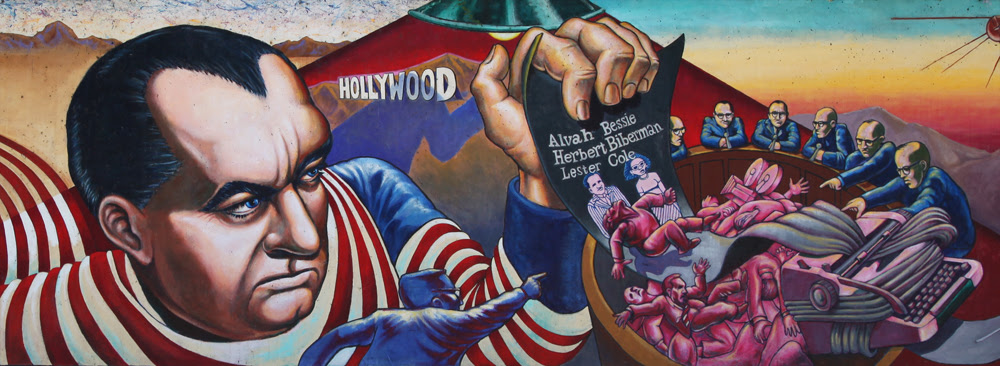
Judith F. Baca, Red Scare/The Great Wall of LA mural, 1993. Lithographic triptych
“From the beginning,” says Bunn, “the themes in the works of traversing borders, femininity and strength, identity, abstraction, and conceptual and process-based styles have been at the forefront.” The series of B.A.T. shows itself has been about artists existing in conversation with each other, in the studio and now, in the gallery.
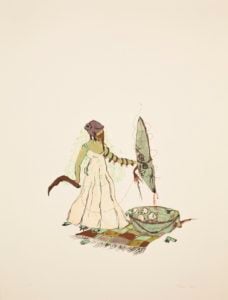
Ruby Osorio, Beware the Armor of Worthy Advice, Printers Proof, 2007
The first exhibition “B.A.T.: bon à tirer | good to go” (Bunn credits Jane Chafin of Off-Ramp for the title) opened in December 2013 presenting on an overall look at the sensibility of El Nopal. The second was “B.A.T. State II,” wherein Bunn and Siqueiros expanded the number of artists. The current exhibition, “B.A.T. State III: Women Artists in Conversation with El Nopal Press,” arose through a conversation with Kristina Newhouse, curator of CSLUB’s Kleefeld Contemporary, where the show is on view through mid-November. “We are thrilled to have the opportunity to mount an expanded version of B.A.T. within a museum space, wherein we are able to show more artists and more work, and hopefully, reach a larger audience within an educational institution,” says Bunn.
Bunn and Siqueiros often speak about the democratic nature of printmaking, in terms of accessibility, and further, “the contributions that so many women have made to printmaking in output, originality, and innovation,” says Bunn. As such, the exhibition is expansive, the better to show the breadth of work in a way that brings to the fore what she calls “Francesco’s best trait, which is his willingness to experiment and to allow each artist to achieve their desired results, while still addressing the precision that is necessary in printmaking.”
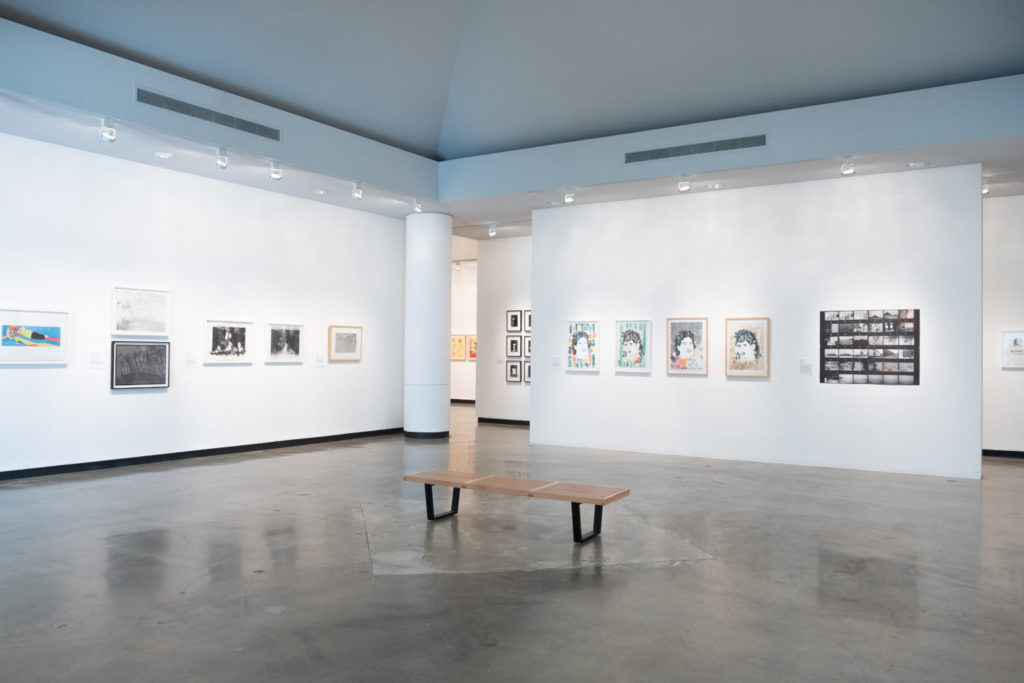
B.A.T. III installation view at CSLUB
El Nopal is about to celebrate 30 years in operation, continuously at the Santa Fe Art Colony, and for the past 15 years, in a second location on 5th Street in downtown’s Historic Core, which is where you can almost always find Siqueiros at work. It’s an old-school storefront print shop filled with both elaborate, assertively mechanical and intensely hand-operated presses that do different things in different ways and an ocean of pots, jars, and cans, and flat files for days.
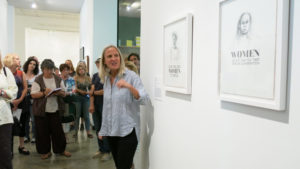
Tatyana Fazlalizadeh, Women do not owe you their time or conversation, 2014, installation view
In 1990, Siqueiros was working at another legendary downtown publisher, Cirrus Editions. He had been working hard in conjunction with the landmark Aqui y Alla exhibition at the Los Angeles Municipal Art Gallery, and he founded his own independent shop only about two weeks after the exhibition opened. The artist Ann Thornycroft donated to him what was his first machine, a hand-operated beast that he still uses.
Siqueiros views his creative community as a kind of extended family, and is known as a great collaborator and innovator, and as Bunn and many others have expressed, the strength of the work produced at El Nopal Press represents not only the skill of the artists but the unique relationship between them and this low-key master printer. As such, the exhibition in organized as a narrative of El Nopal’s concern with the border as both a physical and metaphorical space, and different generations of artists and their work can be explored. The prints are grouped into decades — 1990s, 2000s, 2010s — but within each grouping, the prints are arranged by theme, process or aesthetic, says Bunn, “as a way to allow room for different connections, questions and conversations to arise. It’s what Siqueiros means when he describes the archive as inclusive of “a variety of cultures in a heterogeneous society,” offering enriched responses and an opportunity to connect the dots across the throughline of an archive.
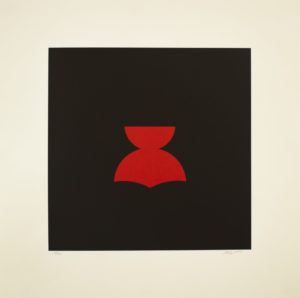
Linda Stark: Black Widow Society 1
For example, Linda Stark’s early work really spoke to Siqueiros’ own love of concrete abstraction, and her pop culture symbolism as well, and she was included in the LAX Benito Juarez Portfolio. Shirley Jaffe and Dominique Liquois were in the El Nopal Paris Portfolio. Emily Cheng produced a four-city suite, and Lisa Adams wanted an edition that worked in serial sequence off a central image for her abstract narratives. Judy Baca took the border as a more literal proposition, and the editions she produced with El Nopal based on the drawings for three sections of her iconic Great Wall of Los Angeles mural are a little-known treasure. Work by Anita Bunn and Analia Saban is more ephemeral, more about temporality and the environment. With 37 artists, in the archive there are truly stylistic expressions and social narratives for everyone.
Furthermore, the show is intergenerational because as it spans 30 years, some of the artists returned periodically over the course of decades, which in turn gives a perspective on the evolution of printmaking itself, from a material and technical point of view as well as the ongoing back and forth between tradition and modernity and the relationships between and among the artists.
So will there be more B.A.T. shows? “I would love that!” says Bunn. “There are so many possibilities for this exhibition. Ideally, there could be a space to show all of the work. Maybe a catalog is the next step.” Siqueiros for his part absolutely feels that the history of El Nopal’s archive is reaching a kind of “critical mass,” wherein its output needs to be regarded as a whole.
Legendary places like Cirrus, Hamilton Press, Gemini G.E.L., Mixografia, and Modern Multiples all have distinct personalities and presences, even with many artists working with more than one of them. “El Nopal has a small but intellectually curious following,” says Siqueiros, “and I’m happy for these shows, giving me a chance to create a kind of archive beyond the meaning I alone could give to it.”
Kleefeld Contemporary Art Museum, Cal State Long Beach, 1250 Bellflower Blvd., Long Beach; through Nov. 14; free.(562) 985-4111), csulb.edu.
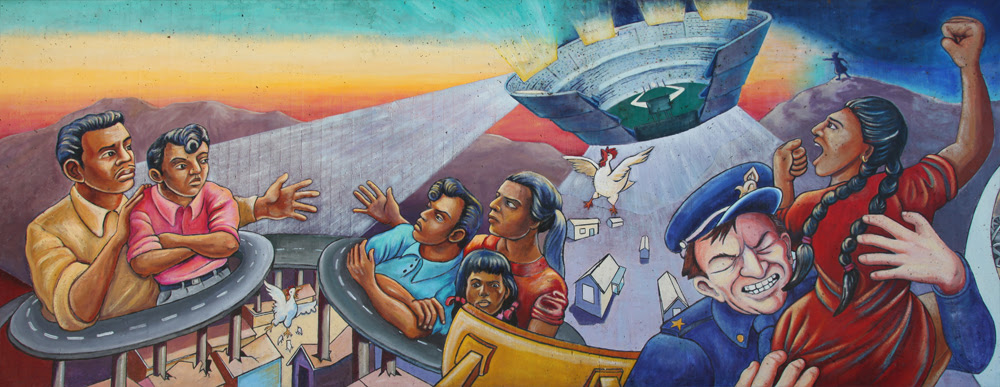
Judith F. Baca, Chavez Ravine/The Great Wall of LA mural, 1993. Lithographic triptych
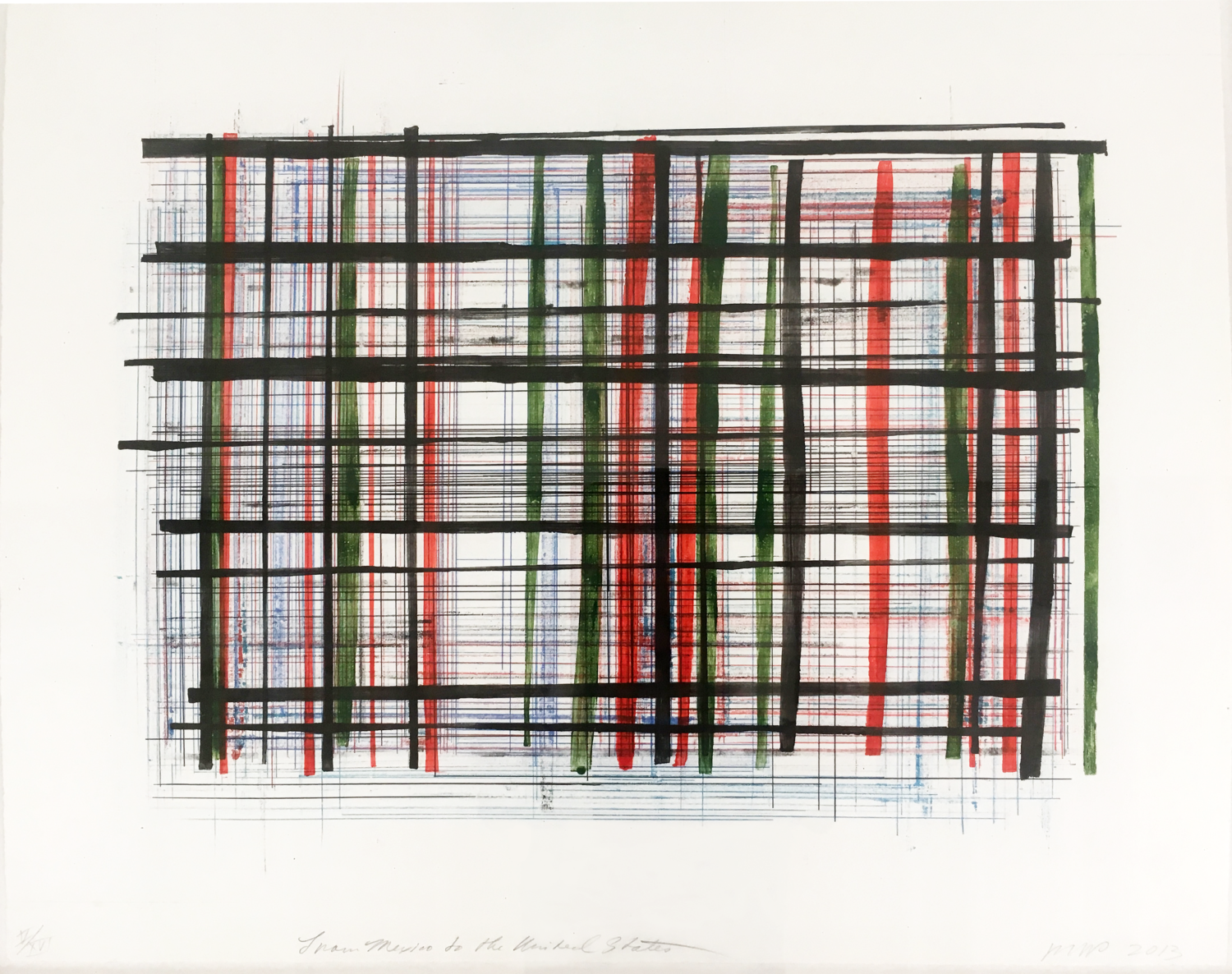
Renée Petropoulos From the United States to Mexico V-XVI, 2013
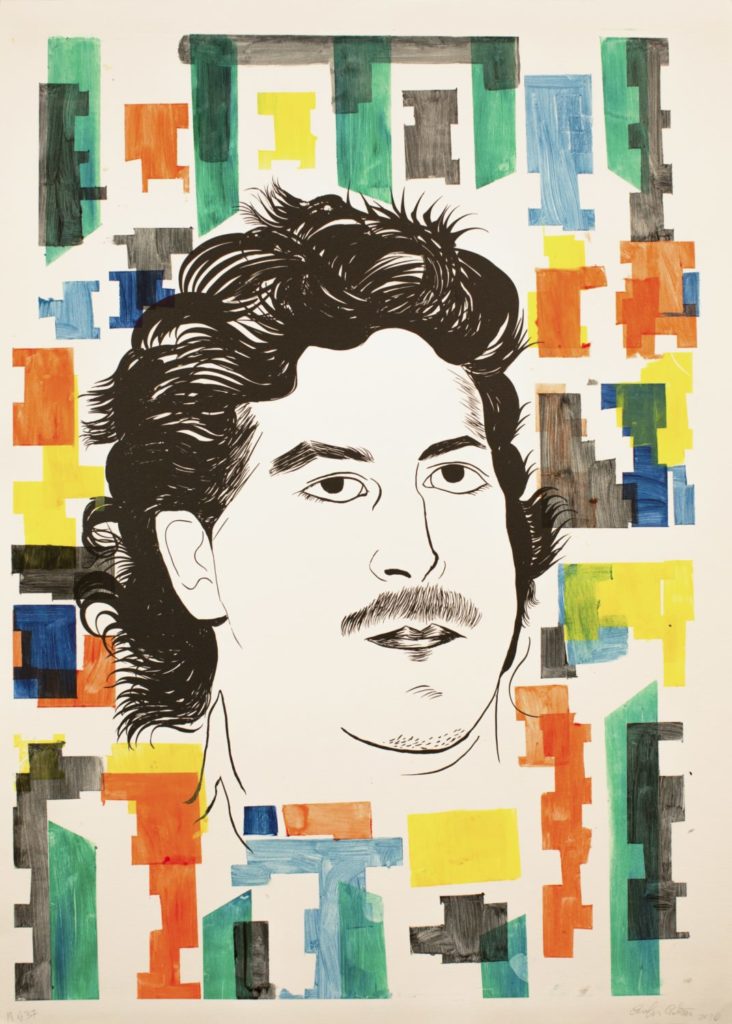
Carolyn Castaño, Drug Lord and Patron
Advertising disclosure: We may receive compensation for some of the links in our stories. Thank you for supporting LA Weekly and our advertisers.

